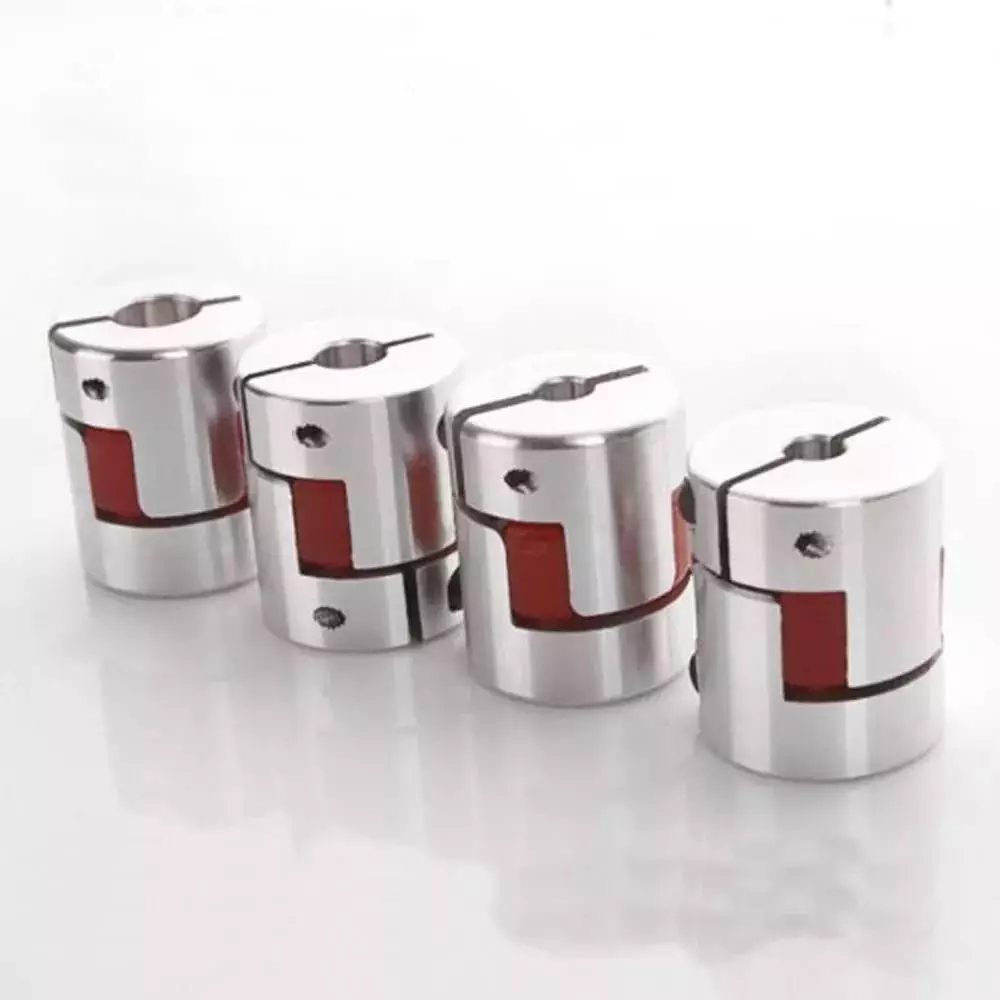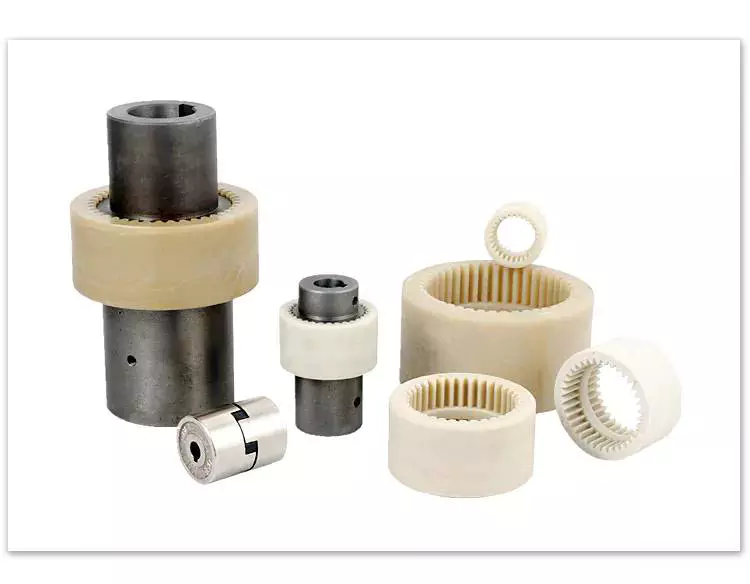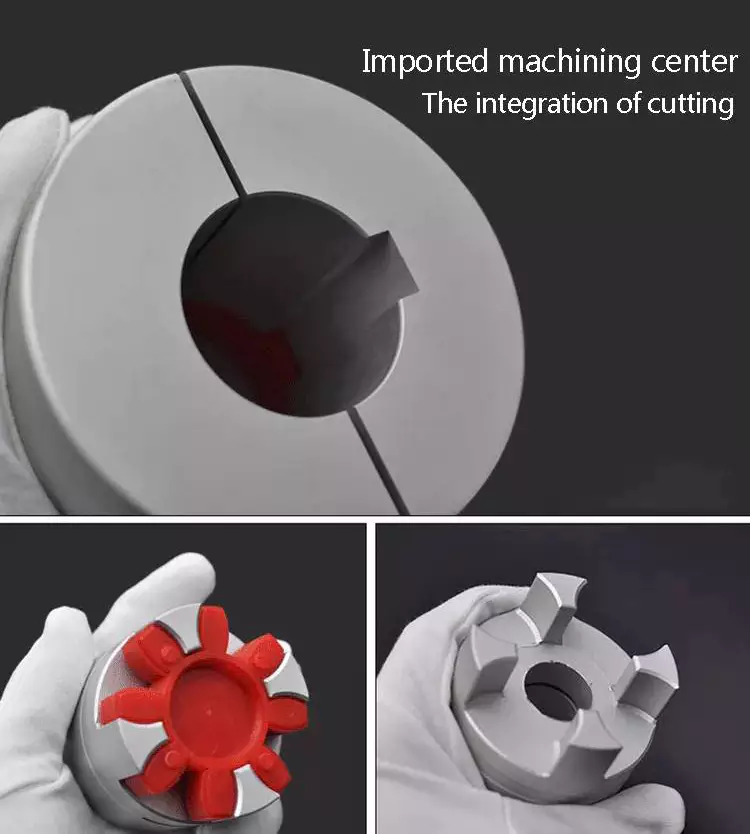Product Description
Solution Description
| Solution Identify | Acetal 1/4″ 5/sixteen” 3/8″ Hose Barb Plastic Tube Connector Swift Disconnect Couplings |
| Engineering | Injection Molding |
| Utilization | Common movement quick-disconnect couplings call for a human body and an insert in the same flow size. Plug insert into entire body to link fitting and effortlessly disconnect the fitting by simply push the thumb latch. |
| Application | healthcare devices, laboratory, life science, biopharmaceutical, biochemical evaluation, bioengineering, circulating h2o cooling pipe method, h2o treatment method and disinfection, foods&beverage, packaging equipment, industrial and hundreds of other apps |
| Tailored Medium | Gasoline/Liquid |
| Material | POM Plastic |
| Seal Ring Materials | Buna-N/FKM/EPDM/Silicone rubber, rely on your usage |
| Valve Spring | 316 Stainless Steel |
| Temperature Range | 32°F – 180°F (0°C – 82°C) |
| Stress Variety | Vacuum to a hundred psi, 6.9bar |
| Valve Option | Valved(shut off) or Non-valved (straight by way of) |
| Form Option | Panel Mount/In-line/Elbow/NPT Threaded |
| Hose Barb Size | 1/sixteen” =1.6mm (01) 1/8″= 3.2mm (02) 3/sixteen”= 4.8mm (03)
1/4″=6.4mm (04) 5/16″=8mm (05) 3/8″=9.6mm (06) |
| Threaded End | 1/8″-27NPT, 1/4″-18NPT Male Thread |
1/4″ Movement rate, 1/4″(6.4mm), 5/16″(8mm),3/8″(9.5mm) Hose Barb Coupling
Relevant Items You May Like
one/4″ Movement Rate All Plastic Series Couplings
1/8″ Circulation Fee Medium Series Couplings
one/16″ Stream Charge Small Series Couplings
FAQ
Q1: Are you trading firm or maker?
A1: We are fifteen many years manufacturing unit. Welcome to pay a visit to our factory.
Q2:What is your sample coverage?
A2:
one. Only for terminal manufacturer
two. You should kindly supply depth information of firm for sample software procedure. Sample is available right after confirmed and approved by administration
three.The international freight expense ought to be paid out by the applicant
Q3:What is your phrases of payment?
A3: 100% payment prior to delivery T/T fifty% as deposit when mass customization, the equilibrium before shipment.
This fall: How about your supply time?
A4: Typically, it will get about 7-fifteen days soon after payment verified. The certain shipping and delivery time is dependent on the things and the purchased quantity .
Q5:What’s the shipping way?
A5: Normally by DHL, UPS, TNT, FedEx convey or as your request.
Q6: Can you produce according to the samples?
A6: Sure, we can produce by your samples or specialized drawings. We accept ODM & OEM.
Packaging & Shipping and delivery
Business Profile
Our company has specialised in researchs and developments, types, manufactures, promotes and product sales of a assortment of plastic fittings, plastic connectors,swift disconnect couplings, check out valves, filters, CZPT pumps, solenoid valves,plastic tubings and other components applied in fluid programs. Our merchandise are extensively used in all varieties of items, machinery,gadgets and approach of liquid and gasoline pipe method, In the daily life sciences and special industrial marketplaces have 1000’s of programs to be utilized, These kinds of as blood strain, blood oxygen checking module and blood gas restoration gear, biochemical evaluation/inspection equipment, dialysis h2o treatment gear, treatment method and reuse products, respiratory anesthesia, incubator, bioengineering and circulating water cooling pipe system, solvent printer, inkjet printer,movie printer and ink supply method, drinking water high quality online analytical instruments, laboratory products, foodstuff equipment, fermentation method approach tools, plating equipment, PCB&Liquid crystal display method gear, chemical gear, packaging equipment, water treatment and disinfection equipment, inflatable goods, automation equipment…And so on.
Dependent on the fifteen-several years encounter in numerous fluidic control programs, our business has experienced a established of extensive producing programs involving in R&D and layout, mold manufacture, plastic injection, assembly & inspection, completed-item revenue and warehousing logistics. It has numerous benefits of secure good quality, productive manufacturing and punctual shipping, which can be stated a dependable companion.
Following diverse specifications from wider customers, including drawings or samples giving, our business can offer you happy style solutions and mass personalized companies.
We are seeking forwards to cooperating with a broad assortment of OEMs and ODMs.
|
US $2.1-3.6 / Piece | |
25 Pieces (Min. Order) |
###
| Standard: | RoHS |
|---|---|
| Material: | POM |
| Connection: | Hose Barb |
| Surface Treatment: | Without Treatment |
| Head Type: | Round |
| Application: | Analysis, Medical, Biochemical, Industrial, Lab,Fo |
###
| Customization: |
Available
|
|---|
###
| Product Name | Acetal 1/4" 5/16" 3/8" Hose Barb Plastic Tube Connector Quick Disconnect Couplings |
| Technology | Injection Molding |
| Usage | Standard flow quick-disconnect couplings require a body and an insert in the same flow size. Plug insert into body to connect fitting and easily disconnect the fitting by simply press the thumb latch. |
| Application | medical devices, laboratory, life science, biopharmaceutical, biochemical analysis, bioengineering, circulating water cooling pipe system, water treatment and disinfection, food&beverage, packaging machinery, industrial and hundreds of other applications; |
| Adapted Medium | Gas/Liquid |
| Material | POM Plastic |
| Seal Ring Material | Buna-N/FKM/EPDM/Silicone rubber, depend on your usage |
| Valve Spring | 316 Stainless Steel |
| Temperature Range | 32°F – 180°F (0°C – 82°C) |
| Pressure Range | Vacuum to 100 psi, 6.9bar |
| Valve Option | Valved(shut off) or Non-valved (straight through) |
| Shape Option | Panel Mount/In-line/Elbow/NPT Threaded; |
| Hose Barb Size | 1/16" =1.6mm (01); 1/8"= 3.2mm (02); 3/16"= 4.8mm (03);
1/4"=6.4mm (04); 5/16"=8mm (05); 3/8"=9.6mm (06);
|
| Threaded End | 1/8"-27NPT, 1/4"-18NPT Male Thread |
|
US $2.1-3.6 / Piece | |
25 Pieces (Min. Order) |
###
| Standard: | RoHS |
|---|---|
| Material: | POM |
| Connection: | Hose Barb |
| Surface Treatment: | Without Treatment |
| Head Type: | Round |
| Application: | Analysis, Medical, Biochemical, Industrial, Lab,Fo |
###
| Customization: |
Available
|
|---|
###
| Product Name | Acetal 1/4" 5/16" 3/8" Hose Barb Plastic Tube Connector Quick Disconnect Couplings |
| Technology | Injection Molding |
| Usage | Standard flow quick-disconnect couplings require a body and an insert in the same flow size. Plug insert into body to connect fitting and easily disconnect the fitting by simply press the thumb latch. |
| Application | medical devices, laboratory, life science, biopharmaceutical, biochemical analysis, bioengineering, circulating water cooling pipe system, water treatment and disinfection, food&beverage, packaging machinery, industrial and hundreds of other applications; |
| Adapted Medium | Gas/Liquid |
| Material | POM Plastic |
| Seal Ring Material | Buna-N/FKM/EPDM/Silicone rubber, depend on your usage |
| Valve Spring | 316 Stainless Steel |
| Temperature Range | 32°F – 180°F (0°C – 82°C) |
| Pressure Range | Vacuum to 100 psi, 6.9bar |
| Valve Option | Valved(shut off) or Non-valved (straight through) |
| Shape Option | Panel Mount/In-line/Elbow/NPT Threaded; |
| Hose Barb Size | 1/16" =1.6mm (01); 1/8"= 3.2mm (02); 3/16"= 4.8mm (03);
1/4"=6.4mm (04); 5/16"=8mm (05); 3/8"=9.6mm (06);
|
| Threaded End | 1/8"-27NPT, 1/4"-18NPT Male Thread |
Types of Couplings
A coupling is a device used to join two shafts together and transmit power. Its purpose is to join rotating equipment while permitting a degree of end movement and misalignment. There are many types of couplings, and it is important to choose the right one for your application. Here are a few examples of couplings.
Mechanical
The mechanical coupling is an important component in power transmission systems. These couplings come in various forms and can be used in different types of applications. They can be flexible or rigid and operate in compression or shear. In some cases, they are permanently attached to the shaft, while in other cases, they are removable for service.
The simplest type of mechanical coupling is the sleeve coupling. It consists of a cylindrical sleeve with an internal diameter equal to the diameter of the shafts. The sleeve is connected to the shafts by a key that restricts their relative motion and prevents slippage. A few sleeve couplings also have threaded holes to prevent axial movement. This type of coupling is typically used for medium to light-duty torque.
Another type of mechanical coupling is a jaw coupling. It is used in motion control and general low-power transmission applications. This type of coupling does not require lubrication and is capable of accommodating angular misalignment. Unlike other types of couplings, the jaw coupling uses two hubs with intermeshing jaws. The jaw coupling’s spider is typically made of copper alloys. In addition, it is suitable for shock and vibration loads.
Mechanical couplings can be made from a variety of materials. One popular choice is rubber. The material can be natural or chloroprene. These materials are flexible and can tolerate slight misalignment.
Electrical
Electrical coupling is the process in which a single electrical signal is transferred from a nerve cell to another. It occurs when electrical signals from two nerve cells interact with each other in a way similar to haptic transmission. This type of coupling can occur on its own or in combination with electrotonic coupling in gap junctions.
Electrical coupling is often associated with oscillatory behavior of neurons. The mechanism of electrical coupling is complex and is studied mathematically to understand its effect on oscillatory neuron networks. For example, electrical coupling can increase or decrease the frequency of an oscillator, depending on the state of the neuron coupled to it.
The site of coupling is usually the junction of opposing cell membranes. The cellular resistance and the coupling resistance are measured in voltage-clamp experiments. This type of coupling has a specific resistance of 100 O-cm. As a result, the coupling resistance varies with the frequency.
The authors of this study noted that electrotonic coupling depends on the ratio between the resistance of the nonjunctional membranes and the junctional membranes. The voltage attenuation technique helps reveal the differences in resistance and shunting through the intercellular medium. However, it is unclear whether electrotonic coupling is electrostatically mediated.
Electrical coupling has also been suggested to play a role in the intercellular transfer of information. There are many examples that support this theory. A message can be a distinct qualitative or quantitative signal, which results in a gradient in the cells. Although gap junctions are absent at many embryonic interaction sites, increasing evidence suggests a role in information transfer.
Flexible
When it comes to choosing the right Flexible Coupling, there are several factors that you should take into account. Among these factors is the backlash that can be caused by the movement of the coupling. The reason for this problem is the fact that couplings that do not have anti-fungal properties can be easily infected by mold. The best way to avoid this is to pay attention to the moisture content of the area where you are installing the coupling. By following these guidelines, you can ensure the best possible installation.
To ensure that you are getting the most out of your flexible couplings, you must consider their characteristics and how easy they are to install, assemble, and maintain. You should also look for elements that are field-replaceable. Another important factor is the coupling’s torsional rigidity. It should also be able to handle reactionary loads caused by misalignment.
Flexible couplings come in many different types. There are diaphragm and spiral couplings. These couplings allow for axial motion, angular misalignment, and parallel offset. They have one-piece construction and are made from stainless steel or aluminum. These couplings also offer high torsional stiffness, which is beneficial for applications requiring high torques.
Flexible couplings have several advantages over their rigid counterparts. They are designed to handle misalignments of up to seven degrees and 0.025 inches. These characteristics are important in motion control applications. Flexible couplings are also inexpensive, and they do not require maintenance.
Beam
A beam coupling is a type of mechanical coupling, usually one solid piece, that connects two mechanical parts. Its performance is largely determined by the material used. Typical materials include stainless steel, aluminum, Delrin, and titanium. The beam coupling is rated for different speeds and torques. The coupling should be selected according to the application. In addition to the material, the application should also consider the speed and torque of the system.
There are two main types of beam couplings. The first is the helical beam coupling, which has a continuous multi spiral cut. This type of coupling offers a high degree of flexibility and compensates for a high degree of misalignment. The second type of beam coupling is the helical shaft coupling, which has a low torsional stiffness, which makes it ideal for small torque applications.
Another type of beam coupling is the multiple beam design, which combines two beams. It allows for more tolerance in manufacturing and installation and protects expensive components from excessive bearing loads. It also helps keep beams shorter than a single beam coupling. This type of coupling also enables a higher torque capacity and torsional stiffness.
Beam couplings can be manufactured with different materials, including stainless steel and aluminum. The “A” series is available in aluminum and stainless steel and is ideal for general-purpose and light-duty applications. It is also economical and durable. This type of coupling can also be used with low torque pumps or encoder/resolver systems.
Pin & bush
The Pin & bush coupling is a versatile, general-purpose coupling with high tensile bolts and rubber bushes. It can tolerate a wide range of operating temperatures and is suitable for use in oil and water-resistance applications. Its unique design enables it to be used in either direction. In addition, it requires no lubrication.
The pin bush coupling is a fail-safe coupling with a long service life and is used for high-torque applications. It provides torsional flexibility and dampens shocks, making it a flexible coupling that protects equipment and reduces maintenance costs. Its hubs are forged from graded cast iron for strength and durability. Besides, the coupling’s elastomer elements reduce vibration and impact loads. It also accommodates a misalignment of up to 0.5 degrees.
Pin & bush couplings are a popular choice for a variety of different applications. This coupling features a protective flange design that protects the coupling flange from wear and tear. The coupling nut is secured to one flange, while a rubber or leather bush sits between the other flange. Its unique design makes it ideal for use in applications where misalignment is a small factor. The rubber bushing also helps absorb vibration and shock.
Mesh tooth
Mesh tooth couplings are used to transfer torque between two shafts and reduce backlash. However, mesh tooth couplings have some limitations. One disadvantage is the break-away friction factor in the axial direction. This problem is caused by the high contact force between the tooth and gear mesh. This can cause unpredictable forces on the shafts.
In this paper, we present a FEM model for mesh tooth coupling. We first validate the mesh density. To do so, we compute the bolt stress as a uniaxial tensile during the tightening process. We used different mesh sizes and mesh density to validate our results.
The mesh stiffness of gear pairs is influenced by lead crown relief and misalignment. For example, if one tooth is positioned too far in the axis, the mesh stiffness will be decreased. A misaligned gear pair will lose torque capacity. A mesh tooth coupling can be lubricated with oil.
An ideal mesh tooth coupling has no gaps between the teeth, which reduces the risk of uneven wear. The coupling’s quality exposed fasteners include SAE Grade 5 bolts. It also offers corrosion resistance. The couplings are compatible with industrial environments. They also eliminate the need for selective assembly in sleeve couplings.

editor by czh 2023-01-30
